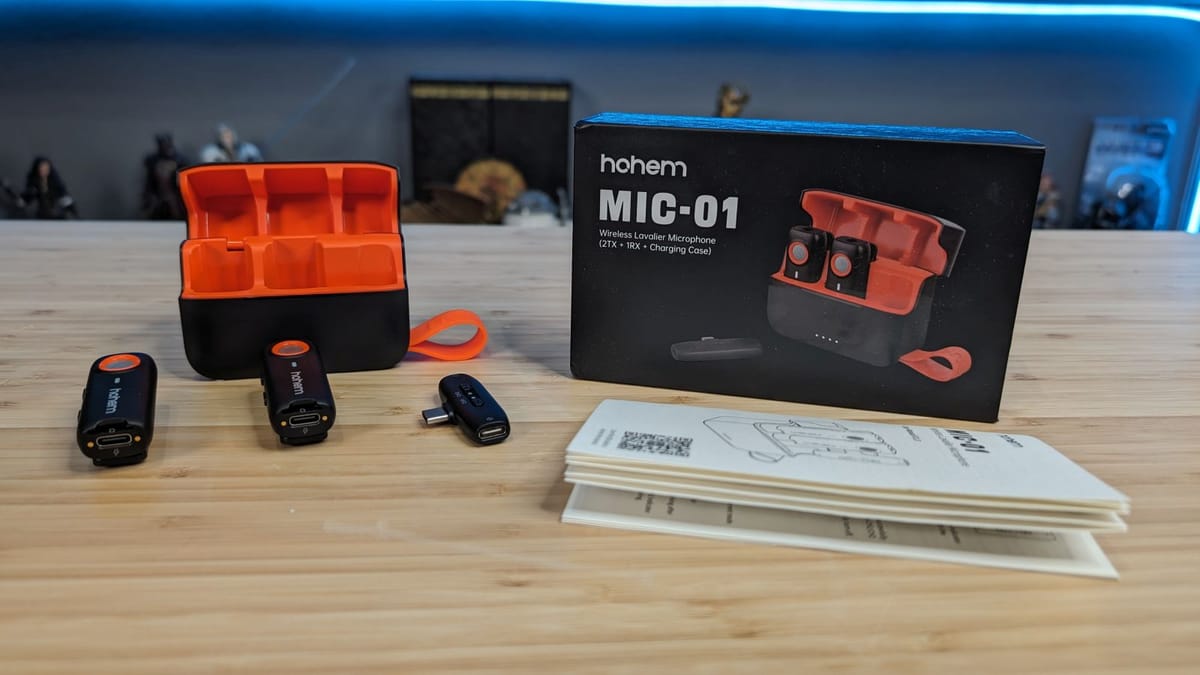
I’ve looked at a number of audio capture devices, especially wireless ones, and so many miss the very mark they set for themselves. Tinny audio, lackluster battery life, echo, loss of connection, and worse plagued too many of these devices. Hohem, long known as a maker of fantastic gimbal devices, has taken their first step into the audio world with the MIC-01. Could this freshman effort from the Hohem team deliver where more storied names could not? Time to find out.
Opening the box you’ll find two transmitters, one receiver, a hard charging case, and a zipper-side carrying case. You’ll also find a well-written set of instructions.
You might recall we’ve recently reviewed the Hohem iSteady MT2 – a stabilizer for phones or mirrorless DSLR cameras. We found it to be extremely useful, and now that I’ve seen it paired up with the MIC-01, it’s also timely – these two are made for one another. As we get into the specifics, it’s easy to see why.

As I mentioned, the MIC-01 is a wireless lavalier system, and this particular one ships with two transmitters. That means it’s set up perfectly for interviews, or if you are using it for a single person, you can double your battery life by swapping between the two transmitters, giving you roughly 20 hours of constant use. The case is also the charger, providing multiple charges back to full, refilling itself over a USB-C port and included cable.
I’ll say up front that the MIC-01 sits at an impossible price point, but we’ll put a pin in that while I explain the features. Other lavaliers from big names are missing some major features that the MIC-01 has right out of the box. The first major inclusion is a 3.5mm jack on top of the transmitter. This allows you to use an external microphone like the clip-on Sony one that I use. That said, the amply-large microphone does a great enough job that you simply won’t need it. Rather than simply state it, hear it for yourself:
I’ll be frank, the space I use for recording my unboxings and talking head videos isn’t acoustically great. The shelves and all of the fun things on it create problems with sound bouncing. The walls have some sound baffling, but I need to add a sound dampening of some kind to the door and likely out of frame above to keep the sound isolated to where I need it most. The room is too small and ill-suited to a shotgun mic, meaning I frequently get a bit of an echo or a tinny or hollow sound that I have to fix in post production. With the Hohem MIC-01 I didn’t have to do a single thing in post. The device has a DSP 3-level noise cancellation chip in each, allowing for discreet audio processing in each transmitter. If you are outside, you can use the included sound muffs to remove wind noise, ensuring you get the same great sound even amidst the elements.
The transmitters hide a few extra goodies that I was surprised to see. Each has a TF card slot for local recording – handy if you want to get an impromptu voice cap without needing to power up a secondary device. In fact, you can record up to 94 hours of independent audio. It also gives you a local backup, should something go sideways with your primary camera. In addition, the transmitter has two physical buttons – one for shutter control, and another for the aforementioned noise cancellation.
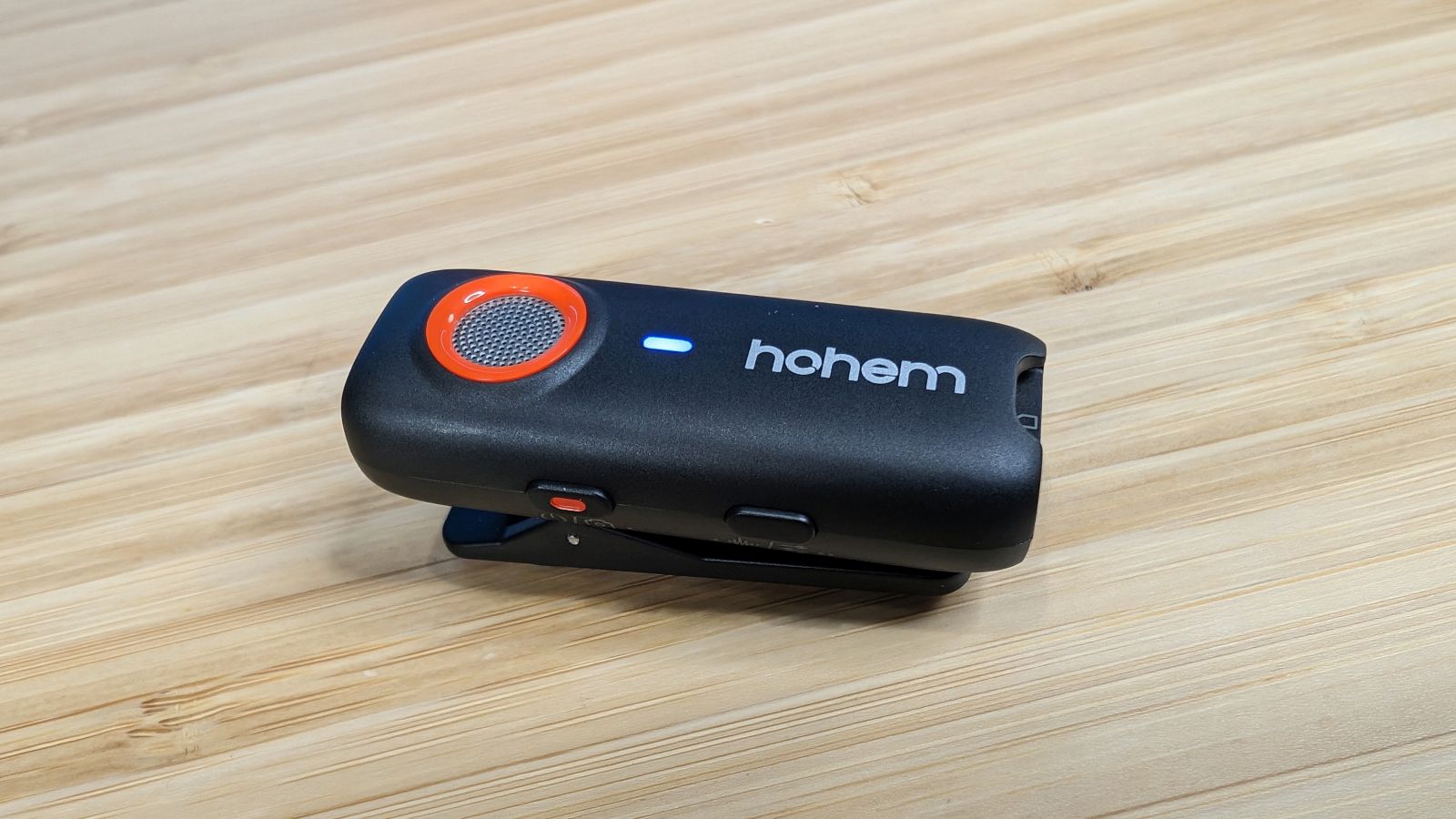
A light with three states indicates the level of noise cancellation. Blue indicates that noise cancellation isn’t engaged, yellow is strong cancellation, and green is standard. The omnidirectional microphone can capture from any and all directions, even upside down, and the noise cancellation ensures that the results are clean.
The last button is shutter control. It’s not always a two-person operation when you are recording, so being able to remotely start and stop your device, or to have it take a picture, is handy. This button does precisely that, as long as your device handles it. The application from Hohem will handle all of your iOS or Android devices, but I had mixed results on my cameras. My Canon M50 DSLR would snap pictures and start/stop, based on how I programmed my primary button to operate. My Black Magic 6K Pro just ignored it entirely – your mileage may vary, as they say.
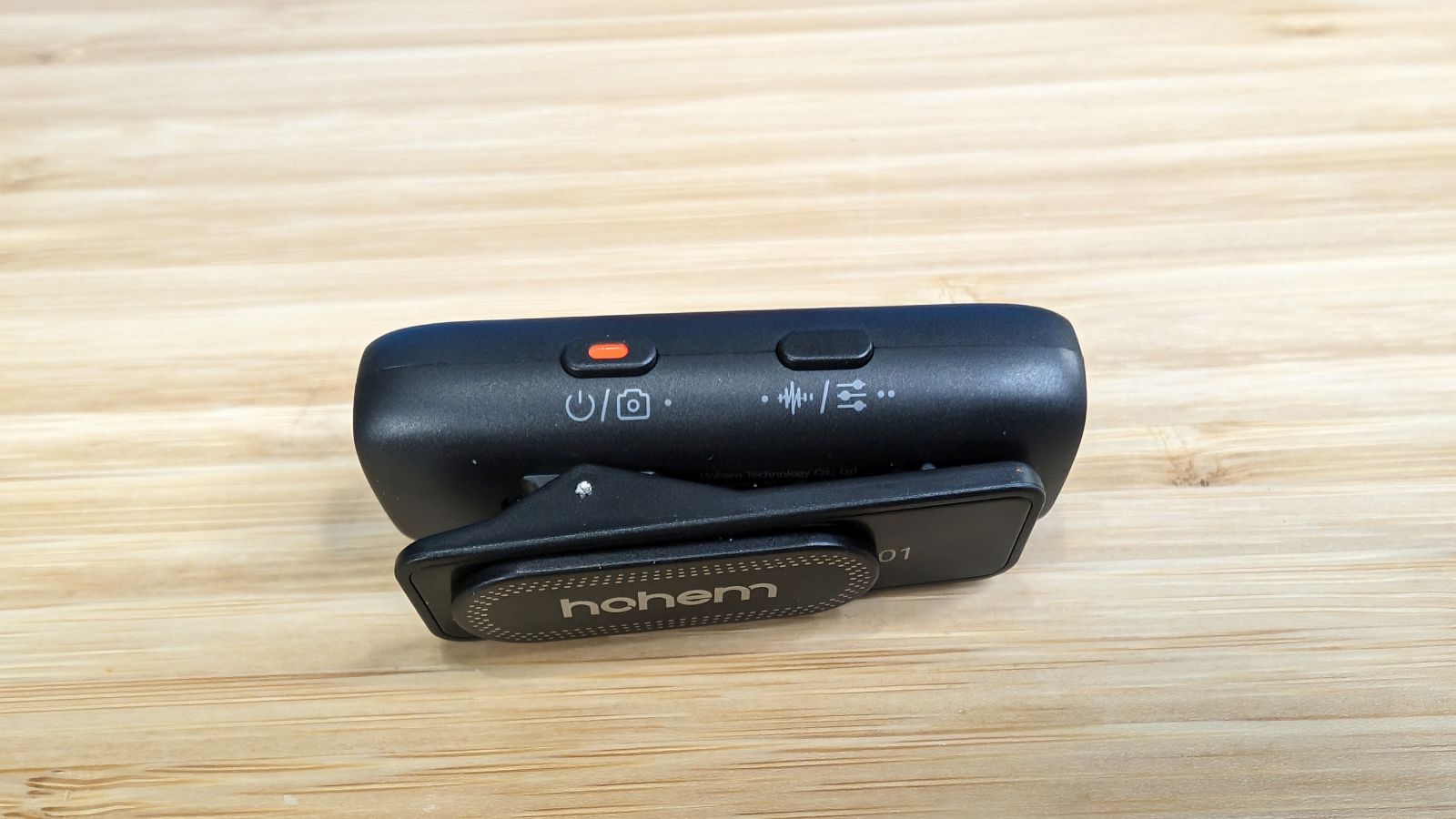
There is a nice optional goodie on the transmitter – real-time monitoring. If you do happen to have somebody behind the camera as well as in front of it, they can use a 3.5mm audio device to monitor the audio levels. Also on the transmitter are two lights so you can see if one or both of the channels are connected and ready to use – useful when you are shooting by yourself. At that point, you are set and ready to go – it’s truly plug-and-play.
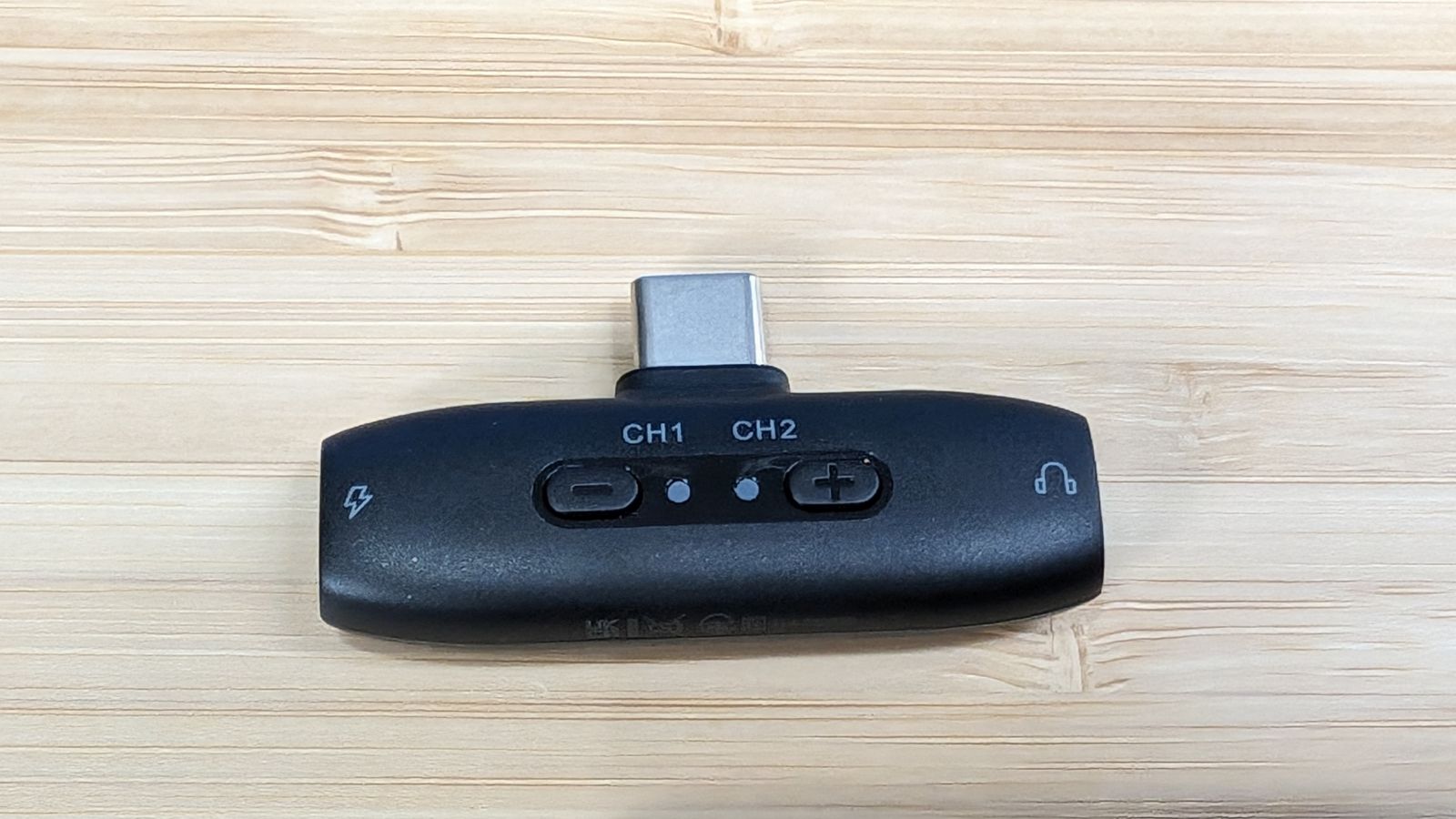
I ended up testing the MIC-01 in a handful of use cases. Combined with the Hohem iSteady MT2 Gimbal we reviewed recently, the incredibly small footprint made it all very easy to balance without drawing any additional discernible power. With my Canon M50 I was able to connect power to the gimbal to keep things running. With my phone I simply plugged it into the USB-C port on the bottom for juice. For my Black Magic 6K Pro I ended up having to plug in a USB-C plug directly to my power strip. Like the iSteady MT2, this device is meant for more consumer use than prosumer, but with a little ingenuity it’ll work for either.
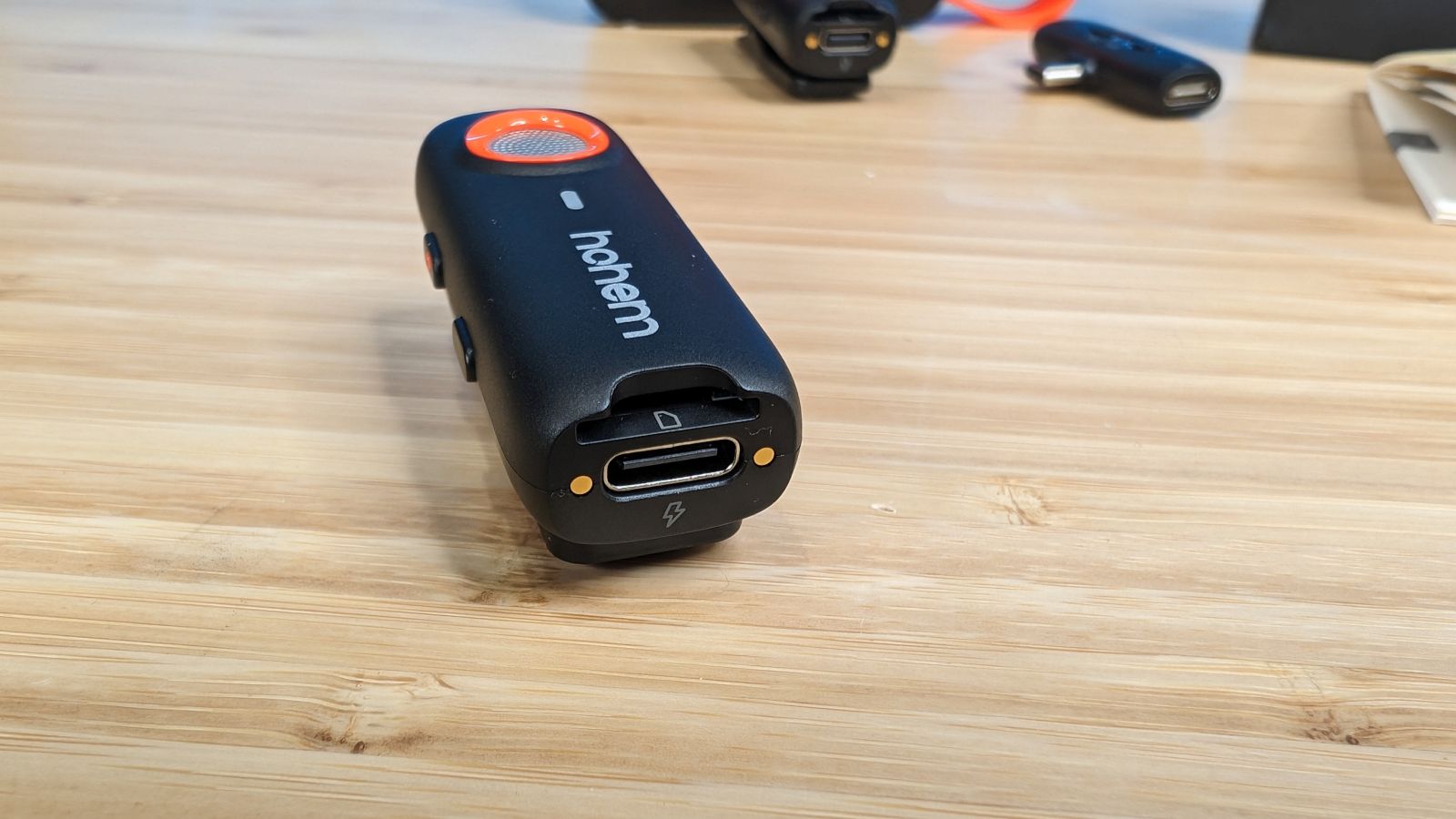
There are a number of lavalier solutions out there at the $150 price range. Comica’s solution is similar, but easily five times larger, coming in around the size of a deck of cards, with a comical daisy chain 3-way charging solution. Movo has a better charging station than Comica’s, and is only about twice the size of the MIC-01, but at a 30-40 dollar price premium. Saramonic’s solution is on par, but the side placement for the 3.5mm jack is awkward in practice. All of that to preface my surprise that not only does Hohem’s MIC-01 go toe-to-toe with all of these, it beats all three and at a price of $129.99 (though it’s on sale for $109 at launch!).
Truthfully, my only complaint with the Hohem MIC-01 is the warranty. With only a year for support, you’ll probably want to pick up some peace of mind through something like Asurion. I hate having to supplement support, but when it’s something important to my workflow, I want to make sure I can get things running again in the case of a fault.
Hohem MIC-01 Wireless Lavalier System
Excellent
At a remarkably affordable price, the Hohem MIC-01 Wireless Lavalier System is an fantastic audio solution that punches far above its weight. It’s a magnificent freshman effort from Hohem, and an excellent synergistic companion audio solution for any of their gimbals.
Pros
- 20+ hours of operation
- Small on-camera footprint
- 3.5mm lavalier option
- TF card support for local recording
- Secondary functions on transmitters
- Excellent DSP noise cancellation
Cons
- 1 year warranty
